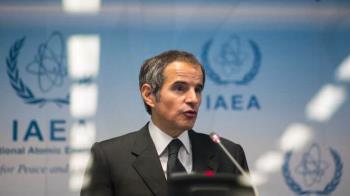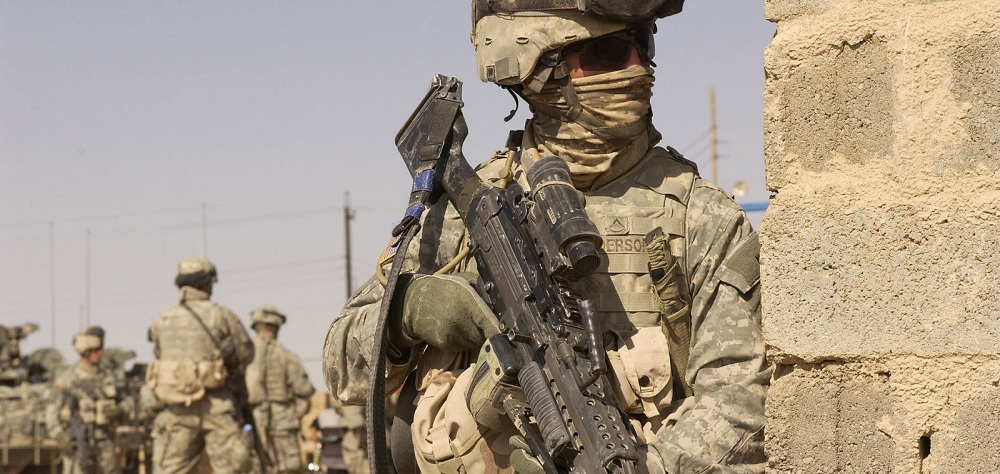Alwaght- Recently, the Reuters news agency, citing the deputy commander of the Bahrain-based Fifth Fleet of the US navy, reported that the US is planning to forge a multinational new force with its mission being prevention of arms smuggling to Yemen from the Red Sea, Bab-el-Mandeb Strait, and Gulf of Aden. He claimed that the new alliance would impact Yemeni Ansarullah's power to procure weapons used to attack Saudi Arabia and the UAE.
Elaborating on the force, Reuters said that it include 2 to 8 ships and three separate units of it would patrol the waters off Yemen to block ways of arms transfer and piracy.
After Reuters report, Al-Khabar Al-Yamani news website said, quoting Aden security resources, a group of American forces arrived in Aden in southern Yemen on Saturday and were stationed in Al-Ma'ashiq Palace, the resistance of the Yemen's new presidential council that was formed following Abdrabbuh Mansour Hadi step-down on April 7.
According to these sources, these forces have already deployed mercenaries from the west coast to strategic positions and areas in the center and around Aden to ensure the return of the self-proclaimed government of Yemeni Prime Minister Moin Abdul Malik.
While Joe Biden during his campaign speeches vowed to put strains on Riyadh to end the seven-year war and seemingly emphasized peace negotiations between the warring sides and supported the two-month ceasefire, now he has chosen to engage in war directly, risking deterioration of the crisis.
Trading blood and oil
According to Reuters, a US official, speaking on condition of anonymity, stressed that the waters between Somalia and Djibouti and Yemen are arms smuggling channels for the Ansarullah Movement, and that the new force would certainly address this issue.
Meanwhile, it is noteworthy that in the past 7 years, after any significant military strike by Yemen on the aggression countries, especially the oil sites of Saudi Arabia, the issue of arms smuggling is raised by the Arab coalition and the US. And despite the illegitimate sea, air, and ground blockades and increase in sea patrols and assistance from the Western military fleets, not only have the Yemeni retaliatory attacks not ceased but also scaled up.
In fact, the Western countries and the Arab coalition know better than anybody else that the issue of large-scale arms smuggling to Yemen has been nearly zeroed under the current siege, where imports of medicine and fuel are difficult, and the Yemenis have been able to localize technology and build strategic weapons such as ballistic missiles and suicide drones and the formation of a new force has no serious impact on Ansarullah's ability to target vital economic centers in Saudi Arabia and the UAE in retaliation attacks. Therefore, the main purpose of this new force is direct involvement of the US military in the war on Yemen in support of the failed Saudi coalition in a bid to improve relations between the US and Saudi Arabia.
In recent months, relations between Washington and Riyadh have been quite noticeably cold, with some reports suggesting that the Saudi Crown Prince Mohammed bin Salman not answering Biden's phone calls. This comes as after the start of the Russian military campaign in Ukraine and the West's move to ban Russia's oil and gas exports, energy prices in world markets have skyrocketed, prompting the Western governments, especially the US, to seek to cover the oil shortage by begging to major oil exporters like Saudi Arabia.
In such a situation, the Saudis seem to have sought to benefit not only by declining to pump larger amounts of oil to the global markets but also by dragging the US, and the West as a whole, into Yemen war after painful drone and missile strikes launched by Ansarullah on Aramco oil facilities in March.
Foisting unilateral negotiations on Ansarullah
On the other hand, the coincidence of the formation of a new military force in Yemeni waters with the new arrangements by Saudi Arabia that included changing political figures in the fugitive government of President Mansour Hadi through the formation of the Presidential Council and the new cabinet formation with the presence of UAE-affiliated southern forces is never accidental. Actually, while Ansarullah has been smart enough to read the Saudi scheme, which eyes circumventing Sana'a conditions including lifting the blockade, ending the airstrikes, and making compensation, and reject any negotiations with the new Saudi-backed council in Aden, the American entry to war seems to be aimed at undermining the Yemeni resistance and imposing a peace to Ansarullah favorable to the Saudis.
Ramifications of the US entry to war
The US entry to Yemen war is a matter of formality and is never something new, as Ansarullah leaders since the beginning of war pointed to the US role in the aggression on Yemen. Washington's involvement in the war has been so serious that if it was not for its assistance to campaign, the Saudis would shortly after starting the war have faltered and lost the power to continue their operations.
This reality and also the fact that difficulty acquiring arms would not hit Ansarullah's strategic military capabilities to launch deterrence operations in the future practically render formation of a new force against Yemen ineffective on the battleground realities.



























